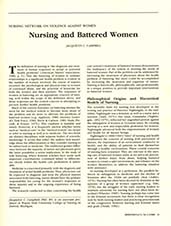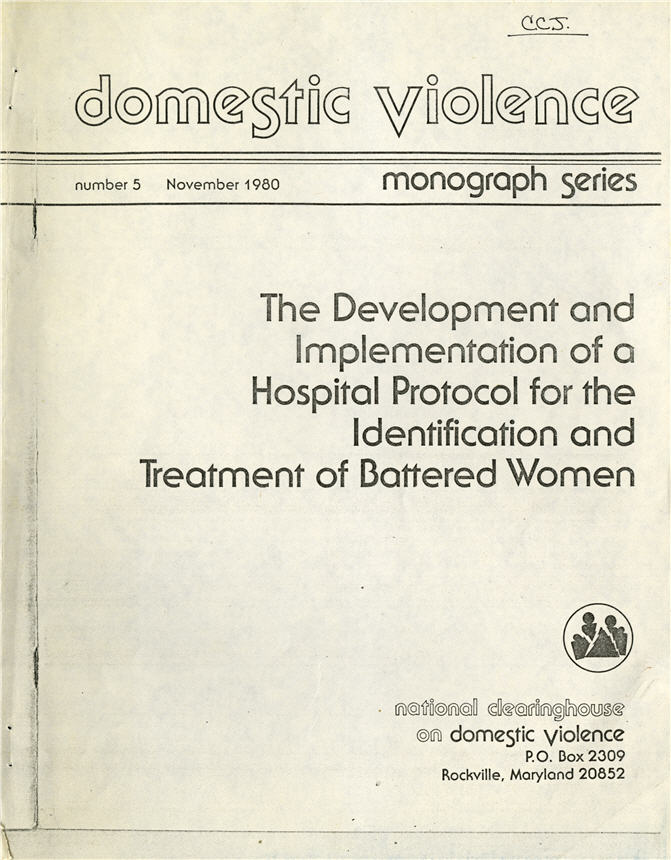Nurses successfully began to change the medical profession as they advocated, educated, and organized nationally.
Based on their research and experience, nurses and their allies created and implemented some of the first hospital protocols for treating women who were battered. Using these protocols, medical practitioners learned how to identify, properly treat, and provide support and resources to this population.
Following suit, in the mid-1980s, the public health community identified domestic violence as a priority health issue. This recognition marked a significant step toward the reform of the medical and health professions in treating victims of domestic violence.
Domestic Violence: The Development and Implementation of a Hospital Protocol for the Identification and Treatment of Battered Women, Patricia McGrath, Phyllis Schultz, and P. O’Dea Culhane, 1980
Courtesy National Library of Medicine
Emergency Department nurses at Boston’s Brigham and Women’s Hospital initiated and implemented the country’s first hospital protocol for the identification and treatment of women who were battered in 1977 and published this manual three years later.
Surgeon General’s Workshop on Violence and Public Health: Report, Health Resources and Services Administration, 1985
Courtesy National Library of Medicine
The surgeon general’s workshop on Violence and Public Health brought together over 150 experts from across disciplines to discuss recommendations on the evaluation, prevention, and treatment of violence, including child abuse, child sexual abuse, rape and sexual assault, and spouse abuse.
Domestic Violence: The Development and Implementation of a Hospital Protocol for the Identification and Treatment of Battered Women, Patricia McGrath, Phyllis Schultz, and P. O’Dea Culhane, 1980
Courtesy National Library of Medicine
Emergency Department nurses at Boston’s Brigham and Women’s Hospital initiated and implemented the country’s first hospital protocol for the identification and treatment of women who were battered in 1977 and published this manual three years later.
Surgeon General’s Workshop on Violence and Public Health: Report, Health Resources and Services Administration, 1985
Courtesy National Library of Medicine
The surgeon general’s workshop on Violence and Public Health brought together over 150 experts from across disciplines to discuss recommendations on the evaluation, prevention, and treatment of violence, including child abuse, child sexual abuse, rape and sexual assault, and spouse abuse.
Nurses successfully began to change the medical profession as they advocated, educated, and organized nationally.
Based on their research and experience, nurses and their allies created and implemented some of the first hospital protocols for treating women who were battered. Using these protocols, medical practitioners learned how to identify, properly treat, and provide support and resources to this population.
Following suit, in the mid-1980s, the public health community identified domestic violence as a priority health issue. This recognition marked a significant step toward the reform of the medical and health professions in treating victims of domestic violence.






